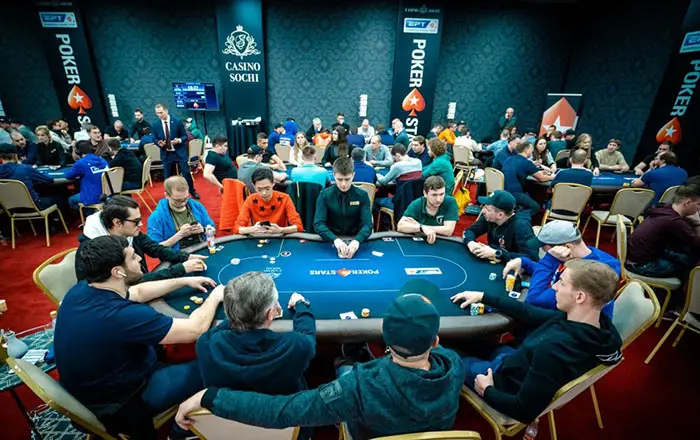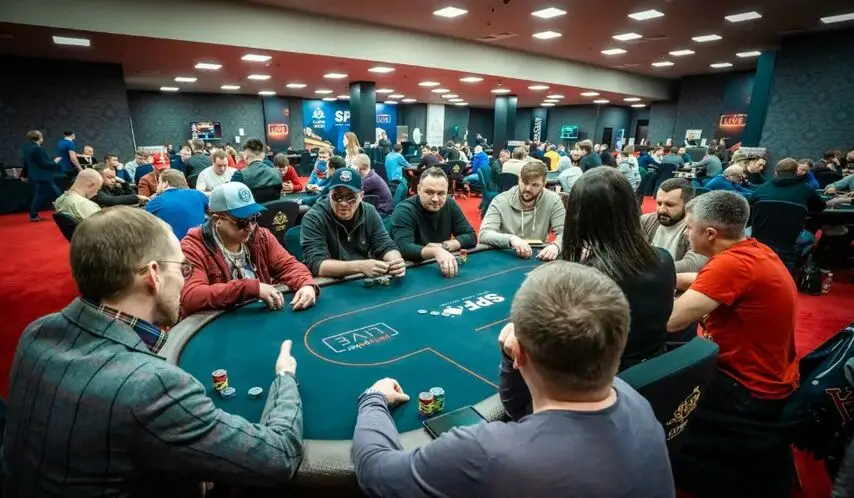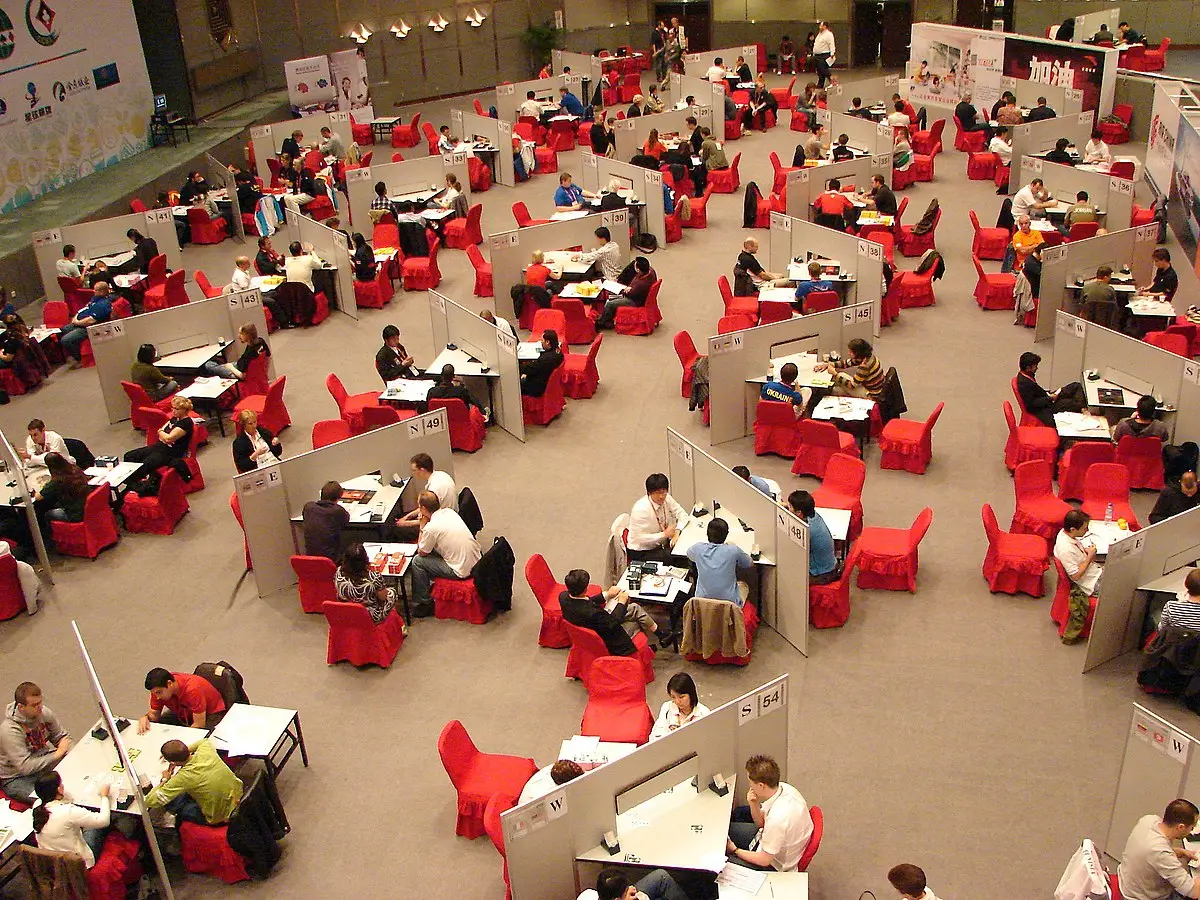The poker calendar for 2025 promises to be a busy season. The tournament series returns to the arenas after the winter break with an updated schedule, improved guarantees and new formats. The nearest poker tournaments in Russia will take place in Sochi, Altai and other major regions with recognised venues.
Sochi, Russia’s event centre: upcoming poker tournaments
The resort town is the venue for most live series. The Sochi Poker Club has updated its calendar for the end of the year, featuring major events.
The main stages of the summer
The Sochi Poker Festival Summer Series kicks off in June and includes 25 tournaments with buy-ins ranging from 11,000 to 250,000 roubles. The main event guarantee is 40,000,000 roubles. There are daily satellite tournaments, including a free online qualifier. July will be dominated by the Russian Poker Cup, with the organisers using three rooms simultaneously. Last year, registration exceeded 1,300, with a guaranteed final table of 15,000,000. Separate High Roller and Super KO events have been added. The grand finale of the summer season of the Sochi Challenge Series will take place in August. The programme includes 30 tournaments, including a unique Progressive Bounty format with a minimum stake of 15,000 and a guaranteed prize pool of 20,000,000.
The closer autumn gets, the tougher the fields become.
In September, the Sochi September Classic series will take place with a reinforced structure and larger starting stacks. The month of October will feature an international series with players from the CIS countries, Iran and Turkey. In December, we will close the year with a fantastic Winter Poker Cup series. Every upcoming poker tournament in Russia is guaranteed. The structure focuses on multi-day events with extended late registration and deep play.
The return of Altai to the map
 Altai Palace Casino has announced the Altai Place Poker Cup series, which will start in July. 12 events included. The main event will deliver a guaranteed amount of 7,000,000 roubles. Formats: Classic freezeout and rebuy tournaments. Upcoming poker tournaments in Russia will take place in Altai, a hub for regional and Asian players. The site offers excellent service, a wide choice of hotels and a bonus programme for participation. Poker in Altai has become a regular feature of the poker tournament calendar, and competition with the Black Sea destination is increasing.
Altai Palace Casino has announced the Altai Place Poker Cup series, which will start in July. 12 events included. The main event will deliver a guaranteed amount of 7,000,000 roubles. Formats: Classic freezeout and rebuy tournaments. Upcoming poker tournaments in Russia will take place in Altai, a hub for regional and Asian players. The site offers excellent service, a wide choice of hotels and a bonus programme for participation. Poker in Altai has become a regular feature of the poker tournament calendar, and competition with the Black Sea destination is increasing.
Online selections and hybrid formats
By 2025, all major series will launch virtual satellites. Through online poker tournaments, you can qualify for live events with a minimal investment. Tickets are available from 500 roubles. On the way out: tickets for the final events in Sochi and Altai. The SmartPoker online tournament series included an online Day 1A with an offline sequel. Thanks to the new format, finalists could be selected without having to travel to the venue. Such hybrid setups improve logistics and make it easier to participate in live poker tournaments.
Upcoming poker tournaments in Russia 2025
Schedule of upcoming poker tournaments in Russia 2025:
- June – Sochi Poker Festival Summer / Sochi / $40 million guaranteed / buy-in from $11,000.
- July – Russian Cup / Sochi / 15 million guaranteed / 3 seats.
- July – Altai Place Poker Cup / Altai / 7 million guaranteed / Freezeout format.
- August – Grand Final Sochi Challenge / Sochi / 20 million guaranteed / 30 events.
- September – Sochi September Classic / Sochi / Deep structures.
- October – International Autumn / Sochi / tickets from 33,000 / 9 countries.
- December – Winter Poker Cup / Sochi / 50 million total guarantee / end of the year.
All events are held at recognised venues and the organisation is of a high standard.
How to choose an event?
There are several parameters that need to be evaluated before registering. Upcoming poker tournaments in Russia offer a wide range of buy-ins and structures. To choose the right one, you need to consider:
- formats (freezeout, rebuy, bounty);
- stack depth and level length;
- availability of qualifying and free satellites;
- the total amount of prize money;
- number of entries in the previous edition;
- Additional series for beginners or high rollers.
Poker tournaments are becoming increasingly popular among tourists in Russia. In Altai, you will find nature and tranquillity, while in Sochi, relaxation on the coast and an urban rhythm prevail. The player chooses not only the buy-in but also the atmosphere of the event.
Major festivals and their structure
Poker festivals are not just a series of events, but full-fledged gaming marathons with dozens of events, different formats, a rich structure and infrastructure. Upcoming poker tournaments in Russia regularly offer large-scale spectacles, which for many participants become the main events of the season.
Diversity of disciplines and formats
The programme of each poker festival is designed to cater to the interests of different categories of players, from recreational enthusiasts to professional high rollers. The standard weekly format includes between 25 and 40 tournaments, covering both classic NL Hold’em and rarer but more popular disciplines:
- Pot Limit Omaha (PLO) is a must for advanced players;
- Chinese Poker Open-Face (Chinese pineapple): attracts players with its unconventional thinking and visual dynamics;
- Heads-Up: a duel format where each participation is equivalent to a separate battle;
- Mixed games: a combination of limited and unlimited formats, such as HORSE or 8-Game;
- Limit Hold’em tournaments are interesting for conservative strategies and old-school players.
The festivals include tournaments with different buy-ins, from the affordable 5,500 roubles to the elite 500,000 roubles High Roller. A game schedule, stack, registration time and detailed payouts are available for each event.
Infrastructure and organisation
Large poker tournaments always involve a lot of logistics. The venue has rooms of various capacities: the main tournament hall, a parallel tournament area, a VIP room and a press room. The independent High Roller venue is more comfortably equipped: improved lighting, sound insulation and more space between the tables.

Each festival is accompanied by:
- Online broadcasts of the finals, with graphs, timers and commentators;
- Photographic coverage for each day: with images of hands, batteries and player reactions;
- Interviews with participants, especially finalists and ‘high rollers’;
- Live reports: highlighting important moments and analysing controversial hands.
The elements of the programme are aimed at improving reputation. Major competitions are not only tournaments, but also a form of entertainment: brand zones, merchandising, souvenirs and autograph sessions with famous players.
Main event structure
The main tournament of a festival (Main Event) stands out in every way. For example:
- Duration – 4-5 playing days;
- buy-in – mid-level 55,000–150,000 roubles;
- starting stack: 50,000-100,000 chips;
- Level duration: 40-60 minutes on day 1, up to 90 minutes at the final table;
- guarantee – from 20,000,000 to 70,000,000 roubles, depending on the series;
- Payout structure: From 12% of participants, with a deep final table.
The format allows for strategic resistance. The number of participants is 1,000-1,800, allowing winners to receive large payouts without having to make a large investment.
Side events
During the upcoming major poker tournament in Russia, the following events will take place in parallel:
- turbo tournaments – with shortened levels;
- bounty tournaments, with payouts for each eliminated opponent;
- Omaha and Short Deck are alternative disciplines;
- women’s and veterans’ tournaments, on separate days;
- Daily Deepstack: compact daily formats for those who did not make it to Day 1.
All tournaments are held under the supervision of certified dealers, with official certification of the randomness of shuffling and counting. The referee team oversees the rules and disputes, which is especially important in major international competitions.
Conclusion
 Upcoming poker tournaments in Russia will take place at the country’s best poker venues. Sochi and Altai are two centres of the live scene, competing in terms of organisation and prize money. Online tournaments provide access to offline tournaments. The 2025 season promises a high density of events, progressive formats and new names in the championships. Players who follow the schedule choose the right format, style and pace. The world of poker is becoming increasingly accessible to anyone looking for games, excitement and a real competitive dynamic.
Upcoming poker tournaments in Russia will take place at the country’s best poker venues. Sochi and Altai are two centres of the live scene, competing in terms of organisation and prize money. Online tournaments provide access to offline tournaments. The 2025 season promises a high density of events, progressive formats and new names in the championships. Players who follow the schedule choose the right format, style and pace. The world of poker is becoming increasingly accessible to anyone looking for games, excitement and a real competitive dynamic.

 en
en  ru
ru  de
de  ar
ar  es
es  nl
nl  hi
hi  fr
fr  it
it  pt
pt  el
el 











